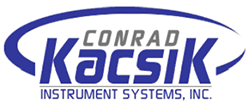AMS2750F Contains Key Pyrometric Changes
 By now, most heat treaters should have had some time to read the new revision of AMS2750. The changes are extensive and, since it is considered a complete rewrite, there are no change bars to indicate specific changes.
By now, most heat treaters should have had some time to read the new revision of AMS2750. The changes are extensive and, since it is considered a complete rewrite, there are no change bars to indicate specific changes.
In this article, we will explore some of the technical changes within AMS2750F.
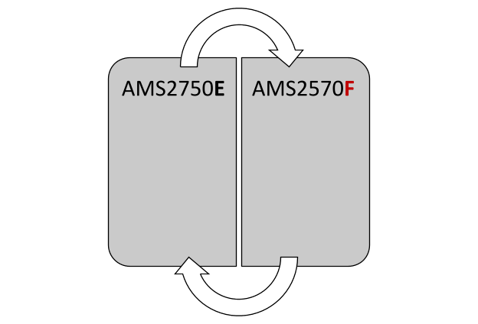
General Changes Within AMS2750F
AMS2750F has a total of 25 tables: an increase from the previous 11. The tables are, for the most part, placed adjacent to the subject matter they pertain to. Certain changes to tables have been made, such as maximum permitted offsets are now in the tables associated with the TUS’s and not the tables associated with SAT’s, as it previously was in AMS2750E.
Numeric values are now expressed to the tenth of a degree as, in revision E, the resolution was to a whole number. It would be logical for heat treaters to begin expressing numeric resolution to the tenth of a degree as well if it’s not already being done. Additionally, quite a few changes within AMS2750F are merely an integration of the Nadcap pyrometry reference guide requirements.
This means that, for those suppliers that are Nadcap accredited, the institution of those specific changes should not have that great of an effect on your processing as you would have already been familiar with the requirements and hopefully already had it implemented as applicable.
Scope and Definitions
Previously, AMS2750E had 79 total definitions. This has been increased to 87 total definitions. Definitions can play a key role in not just understanding AMS2750 but interpreting the requirements as they are being implemented and audited. It is important to understand the definitions as they apply to your operation. A good example of this is the definition change of expendable to nonexpendable thermocouples.
One definition worth mentioning is paragraph 2.2.25 and its associated table. The placement of this definition and table will help both heat treaters and auditors to understand the frequency of testing in detail when examining due dates of testing. Previously, this had the potential to be interpreted in several different ways, whereas now, it cannot be. This is one of the many positive changes within AMS2750F.
Thermocouples
RTD’s are now addressed within AMS2750F. There are now specific limitations regarding permitted error and composition. While it does not seem RTD’s are used as often as thermocouples, it is important for those who use RTD’s to ensure their existing thermocouples conform to AMS2750F and that procedures address the new requirements.
A change that seems to have gotten attention is the elimination of standard limits for base metal thermocouples. Previously, TUS and load thermocouples (and furnace thermocouples for CL3 – CL6) had a maximum permitted error of ±4.0 degrees Fahrenheit or ±0.75%, whichever was greater while SAT and furnace thermocouples (CL1 and CL2) had a maximum permitted error of ±2.0 degrees Fahrenheit or ±0.75%, whichever is greater.
Standard limit thermocouples were defined as ±4.0 degrees Fahrenheit or ±0.75%, whichever was greater and special limit thermocouples were (and still are) defined as ±2.0 or ±0.4%, whichever is greater. Previously, quite a few suppliers would order only special limit wire as having both standard and special limit wire in a production facility posed the risk of some thermocouples that met only standard limit error to be used for, say, an SAT test which requires special limit wire. For this reason, I cannot see this change posing too great a burden on the industry. In fact, it seems to make sense considering the procurement of thermocouples in the last six years.
The next major change is the definition of expendable and nonexpendable thermocouples. Previously, the definitions were:
- Expendable thermocouples are those that are covered in plastic or fabric insulation
- Nonexpendable were all others.
This is not the case any longer. Now, an expendable thermocouple is where any portion of the thermal element is exposed to the thermal process environment. Anything other than that is considered a nonexpendable. To get this new change into a more practical view, Table 3 has been inserted into AMS2750F. This table should be considered when suppliers begin to question whether the thermocouples currently in service apply to the new definition.

Table 1: Expendable vs. Nonexpendable
A change made that was based on Nadcap requirements was the inclusion of multiple methods to find a correction factor not stated on a thermocouple or test instrument certification. With AMS2750F, processors are now permitted to use either linear interpolation or selection of a correction factor based on the nearest test point. The key to this is potentially three-fold:
- Identify which method you choose to implement.
- If not using the linear interpolation method, identify what you will do when the temperature being used falls directly in the middle of two test points.
- Document which method will be used and use it consistently on both thermocouple certifications as well as test instrument certifications.
Additional items have been added to what is required to be on the thermocouple calibration report. These new items are extensive, and I will not be going into each one. For the most part, thermocouple suppliers already had these items on the certifications. The one item less likely to be on thermocouple certifications claiming conformance to AMS2750E is a statement of initial calibration or recalibration.
As stated, the majority of the new items required on thermocouple certifications were already on most industry certifications, with the exception of initial or recalibration. Regardless, I recommend each supplier verify that, within their internal procedures (including any applicable receiving/quality review checklists) that each new requirement within AMS2750F, para 3.1.11.1 is incorporated into applicable procedures. To shorten the labor, let’s just state that para 3.1.11.1 –A, B, D, E, F, G, (portions of) J & K, L M, O & P are new to AMS2750. The portions of J & K do not necessarily add up to anything new; they were part of the pyrometry reference guide for AMS2750E already, so those suppliers that were Nadcap accredited before the release of AMS2750F should (hopefully) already be in compliance.
Instrumentation
The changes within the instrumentation section of AMS2750F may have a bit more of an impact than those within the thermocouple section. For example, the removal of “monitoring” instruments seems more benign than the requirement that all recording instruments must be digital and have a readability of 0.1 degrees Fahrenheit after June 2022. Test instrument must also have a minimum readability of 0.1 degrees Fahrenheit.
Not all test instruments have the ability to accomplish this. Consider a test instrument that, when reading less than 1000 degrees Fahrenheit, some test instruments may have a readability of 0.1 degrees Fahrenheit. Once that particular instrument receives a reading of 1000 degrees Fahrenheit or greater, the digit within the tenths place may disappear. This is something suppliers should look for.
Another major change within the instrument section is the calibration of clocks and timers within digital recording systems. We should all agree that this is a long time coming. Timing within heat treating, especially for more sensitive materials such as nonferrous metals, is critical. With this, there is also a new requirement that stopwatches must be calibrated every two years and be accurate within ± 1-minute p/hr.
You cannot calibrate a furnace recording timer system with a stopwatch that is not calibrated. There are provisions within the recording timing system calibration requirements stating that, if a supplier has a synchronized system linked to NIST (National Institute of Standards and Technology) via an internet system, which is verified monthly, which will support the ±1-minute p/hr requirement, this will suffice. Of course, this will be up to the supplier to interpret, establish and prove.
Instrument calibration sticker requirements have small changes, one being that the furnace or instrument number must be identified on the sticker. The other is that identification of limitations may be spelled out on the instrument calibration certification. This is not a new allowance: it was previously in the pyrometry reference guide.
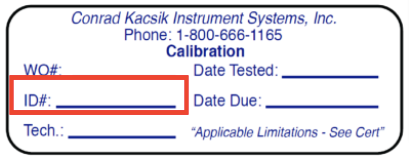
Figure 1 – Calibration Sticker
The instrument calibration certificate contains quite a few new requirements. The more major changes have been within para 3.2.5.2.a, d and e. Portions of g, h and i are new, although small additions have been made to those paragraphs. Nevertheless, it is important to read each paragraph in detail to ensure purchase orders and/or internal certifications contain the required information.
A new instrumentation type has been added – instrumentation type D+. This new instrumentation type is simply type D with the addition of a recording sensor that is within 3” of the control sensor and must be of a different sensor type. Those already familiar with AMS2750 will recognize that 3” requirement and relate it to an SAT thermocouple requirement. I have not seen too much feedback regarding suppliers identifying their equipment as type D+ as there is no benefit to reduced testing frequency, although I am sure it will show up in the industry from time to time.
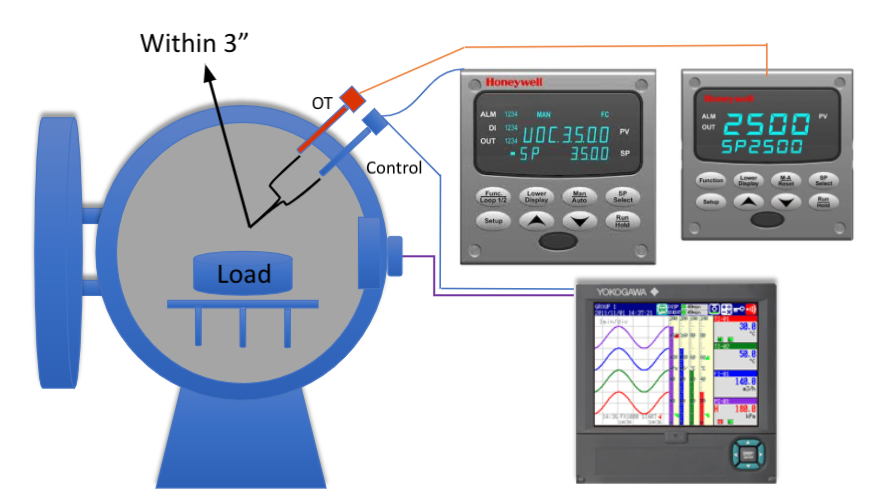
Figure 2 – Type D+ Instrumentation Type
System Accuracy Testing
The SAT section seems to have gotten the most attention so far. To start, paragraph 3.4.1.3 states that, if a sensor system has a single input into an electronic recording device which then splits that single input to multiple screens/menus, only a single view needs to be used for the SAT reading. This is a major step forward considering recording systems must be electronic two years after the publication of AMS2750F. Quite a few systems in the industry include PLC’s, meaning a single input can be routed to multiple menus within a system, so this new allowance is great for those suppliers.
A major change within both the SAT and TUS section is using recording instruments used for thermal processing as field test instruments, as long as it can be demonstrated that the test channels of an integrated system are separated from the furnace recording system and meet the field test instrument requirements. There is quite a bit packed into that statement. Let us, for a moment, focus on the word “separated,” a word that, in an auditing scenario, can be ambiguous. This wording is likely to be misinterpreted by suppliers and auditors alike. This allowance should be thought of as an at-your-own-risk convenience. It seems so much easier to just keep using a separate test instrument, although I am sure it will be attempted somewhere in the industry.
Previously, if you could not perform an SAT per the required frequency, a supplier could perform the SAT during the next production cycle (AMS2750E, para 3.4.2.4). This is not the case any longer. If the frequency is not met, the SAT must be performed prior to the first production cycle (AMS2750F, para 3.4.2.1). This is a new (albeit inconvenient) requirement I recommend all suppliers recognize.
For suppliers who process material in a furnace that has multiple qualified operating ranges, the SAT must be performed in each qualified operating range at least annually. As an example, if a furnace operates between 1000 degrees Fahrenheit to 1600 degrees Fahrenheit as a CL-2 (±10 degrees Fahrenheit) and 1601 degrees Fahrenheit to 2000 degrees Fahrenheit as a CL-5 (±25 degrees Fahrenheit), an SAT would have to be performed in each range at least annually. This change is logical and it’s not very surprising it has finally come to be.
The section on alternate SAT’s has changed significantly, although most of it was pulled from the pyrometry reference guide. One item to pay attention to is para 3.4.8.2.3. If this is implemented in such a way, it may require the allowance of instrument offsets, which will also require offsets of that type (and any others permitted) to be addressed within internal procedures.
The SAT report has a few new items. Portions of AMS2750F, para 3.4.11.1.b and f, have changed, as well as new requirements such as para 3.4.11.1k, i and p. There is nothing that should confuse suppliers. Just pay attention to the portion about correction and modification offsets being identified. Even if neither is permitted per internal procedures, it is still better to identify a zero offset of any kind to an auditor instead of leaving it open to interpretation.
Paragraph 3.4.11.2 is new. It speaks to the required items on an alternate SAT report. Most of the items seem logical and are straightforward. The challenge comes when a supplier wishes to take advantage of para 3.4.8.2.3, limiting the error of the instrument calibration and/or sensors being used. If this is the method chosen, one of the two variables within the alternate SAT has been procedurally eliminated. That being said, there would be no certification to go along with the alternate SAT in this case, practically speaking. It would almost be a memo, less a certification/documentation. Nevertheless, AMS2750F requires “documentation” in any case, so we all need to follow the instructions/requirements given.
Temperature Uniformity Survey
Temperature uniformity surveys, in my opinion, have the most significant impact on metallurgy (ask your current pyrometry service provider/auditor why and how). From nonferrous materials to brazing, TUS results can have a major impact on the metallurgical properties of materials.
There are several changes within this section that have no impact on the metallurgical of materials. The changes are more clerical and less engineering-related. For example, the verbiage within tables 18 and 19 do not permit the initial TUS to be counted as part of the consecutive TUS’s needed to go to extended frequency. This is not spelled out word for word within the specification but is apparent within the wording on table 18 and 19, and would have no practical impact on metallurgical aspects of materials.
Two changes that are more on the engineering end would be both para 3.5.8.6 and para 3.5.9.1 (table 21). Para 3.5.8.6 requires that furnaces that operate at partial pressure must be surveyed at any temperature within the qualified operating range at the partial pressure used during production. One could argue that this should be treated as a radiation TUS; if nothing changes in the partial pressure system, why survey at partial pressure annually? Regardless, it is now a requirement and must be followed.
Para 3.5.9.1, as it relates to furnace-qualified work zones ≤3ft3, the thermocouple placement for TUS TC’s has changed. The previous method was to place them on a single plane. This information, unfortunately, could only be gotten by attending certain training sessions and was not in the pyrometry reference guide. Fortunately, this has changed and the locations for TUS TC’s in work zone volumes less than ≤3ft3 have changed and must be placed per table 21. This is an important and significant change that should be recognized by suppliers having qualified work zone volumes ≤3ft3.
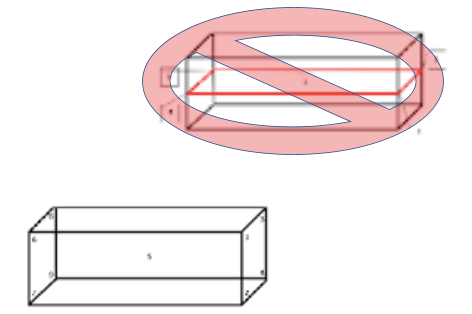
Figure 3 - Select locations 1, 4, 5, 7 & 8 or locations 2, 3, 5, 6 & 9.
Location 5 will always be the center.
Previously, TUS data must have been collected before the first furnace or test thermocouple reached the lower end of the uniformity tolerance. Now, AMS2750F requires data collection of all furnace and test sensors to begin before the first furnace or test thermocouple is within 100 degrees Fahrenheit of the setpoint temperature.
The next important change is the TUS documentation requirements. To keep it simple, the changes are within AMS2750F, para 3.5.16.1.b, d, f, g, h, i, (portions of) l, o, r, s and y. Hopefully this helps suppliers be able to nail down exactly what has changed with the TUS documentation requirements.
Rounding
When AMS2750E was released with the new requirement that suppliers had to round significant digits in accordance with ASTM E29, suppliers suddenly needed to understand a method that may not have been previously utilized. While AMS2750F still permits rounding, it states that it is now the absolute method within E29 if E29 is chosen. The new revision also now permits suppliers to use the rounding method built into commercial spreadsheet programs. The key here is for suppliers to procedurally establish which option they choose and do it that way each time for all testing.
Quality Requirements
The only item inserted in this section is that, for suppliers who use external pyrometry service providers, that those providers must be 17025 accredited in the discipline they are servicing. If a service provider is 17025 accredited, they will have procedures that will be audited by a third party and, with that, the service provider's procedures will not need to be reviewed by the supplier (AMS2750F, para 4.8.1).
Establish Correct Requirements and Specifications
While this article does not list every administrative and technical change within AMS2750F, the changes listed may have a significant impact on suppliers. It is important for suppliers to perform a complete specification accountability review of AMS2750F to capture each requirement and find the best and most practical way to implement those requirements.
Additionally, recognize that not all primes (i.e., GEAE, Rolls Royce, Honeywell, etc.) will accept the requirements within AMS2750F and may outline more stringent requirements. As always, I recommend repeat training sessions to ensure all requirements are realized and implemented correctly.


